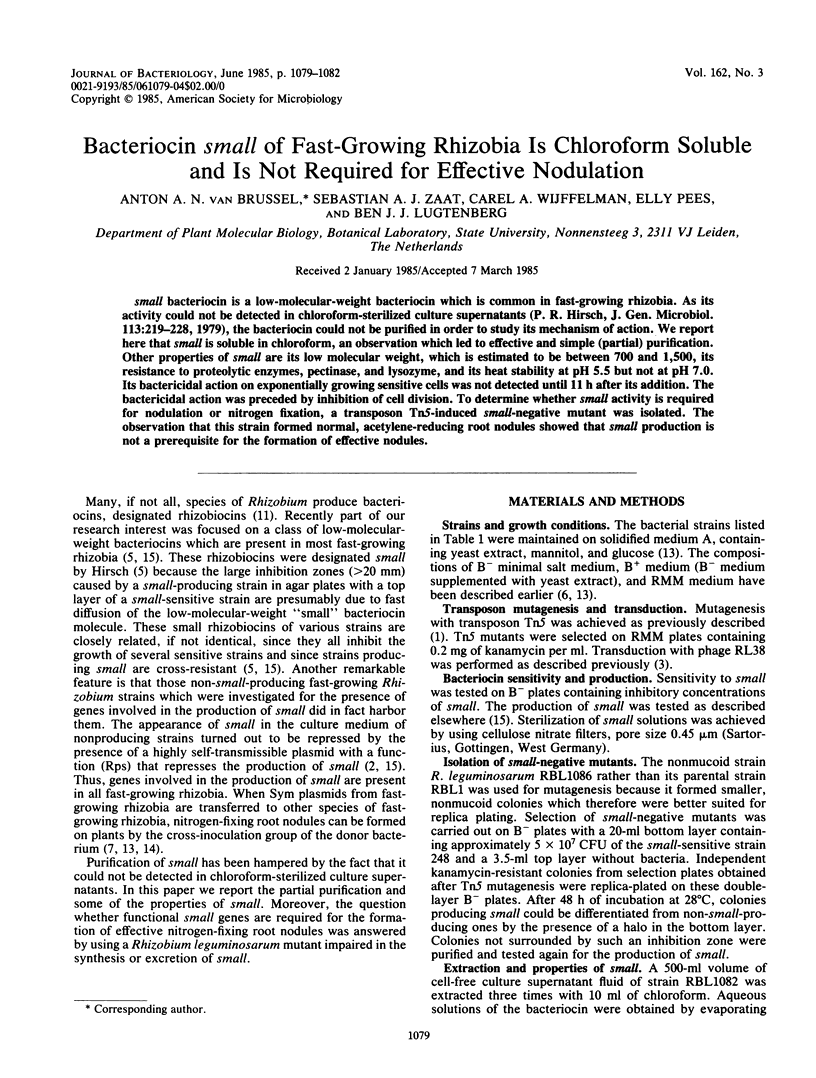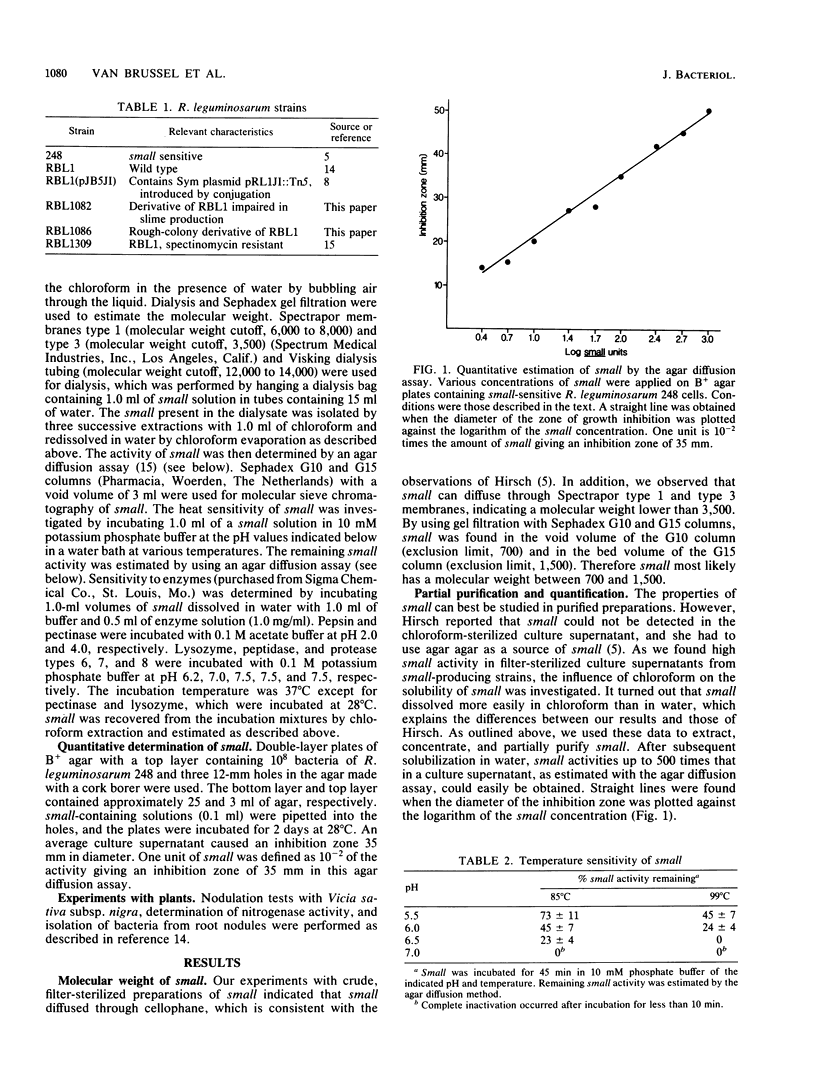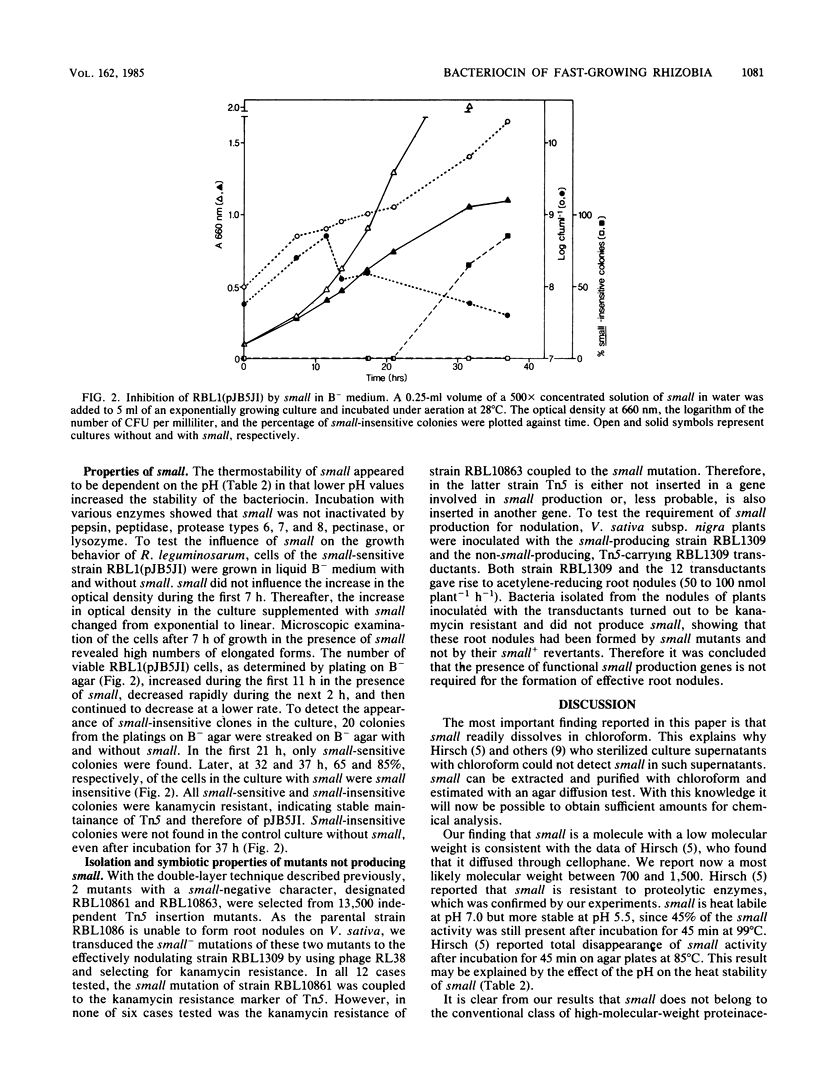Abstract
Small bacteriocin is a low-molecular-weight bacteriocin which is common in fast-growing rhizobia. As its activity could not be detected in chloroform-sterilized culture supernatants (P.R. Hirsch, J. Gen. Microbiol. 113:219-228, 1979), the bacteriocin could not be purified in order to study its mechanism of action. We report here that small is soluble in chloroform, an observation which led to effective and simple (partial) purification. Other properties of small are its low molecular weight, which is estimated to be between 700 and 1,500, its resistance to proteolytic enzymes, pectinase, and lysozyme, and its heat stability at pH 5.5 but not at pH 7.0. Its bactericidal action on exponentially growing sensitive cells was not detected until 11 h after its addition. The bactericidal action was preceded by inhibition of cell division. To determine whether small activity is required for nodulation or nitrogen fixation, a transposon Tn5-induced small-negative mutant was isolated. The observation that this strain formed normal, acetylene-reducing root nodules showed that small production is not a prerequisite for the formation of effective nodules.
Full text
PDF



Selected References
These references are in PubMed. This may not be the complete list of references from this article.
- Joseph M. V., Desai J. D., Desai A. J. Production of Antimicrobial and Bacteriocin-Like Substances by Rhizobium trifolii. Appl Environ Microbiol. 1983 Feb;45(2):532–535. doi: 10.1128/aem.45.2.532-535.1983. [DOI] [PMC free article] [PubMed] [Google Scholar]
- Roslycky E. B. Bacteriocin production in the rhizobia bacteria. Can J Microbiol. 1967 Apr;13(4):431–432. doi: 10.1139/m67-057. [DOI] [PubMed] [Google Scholar]


